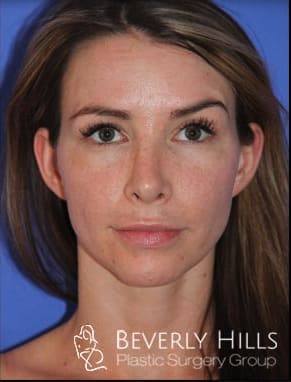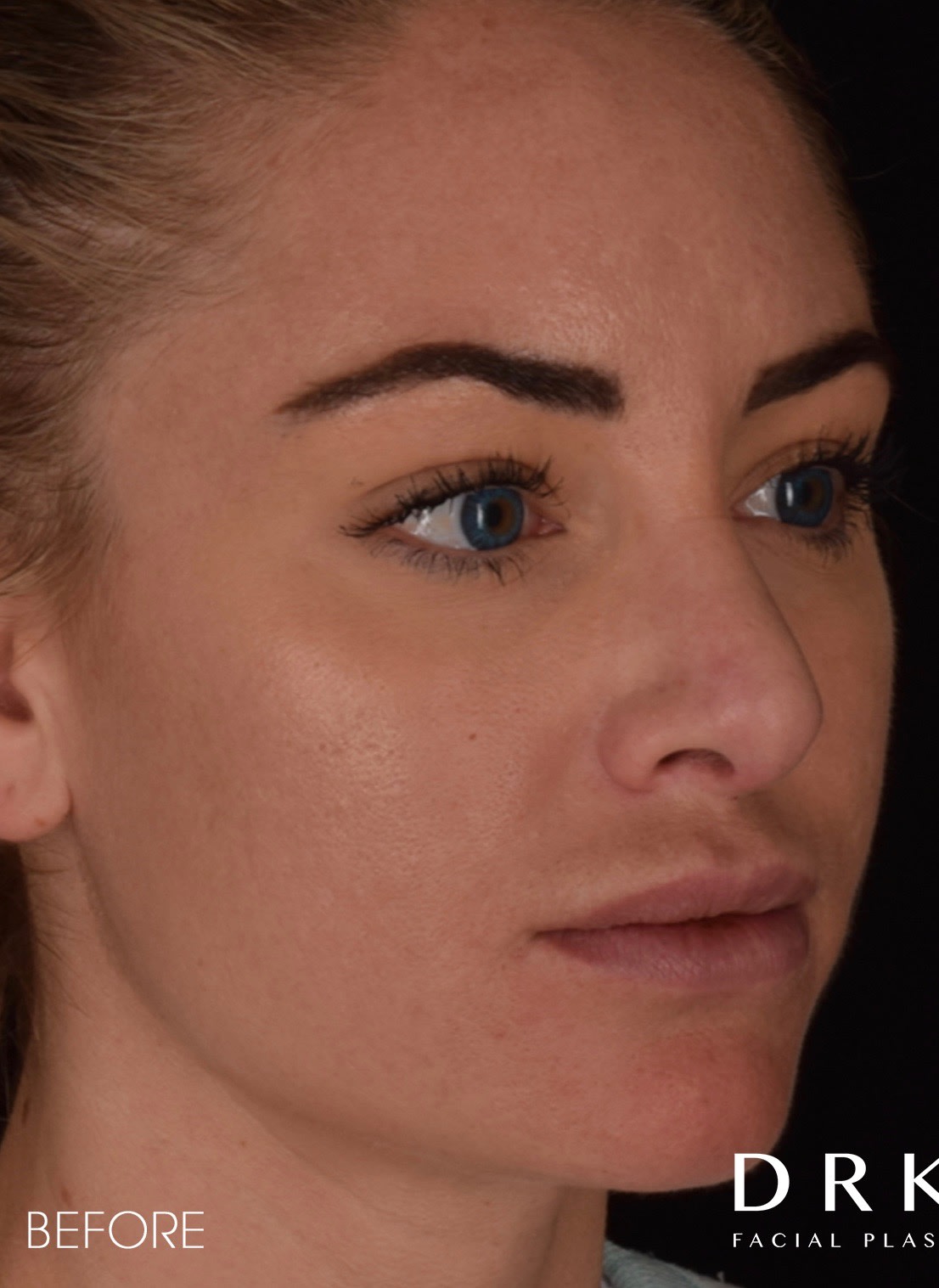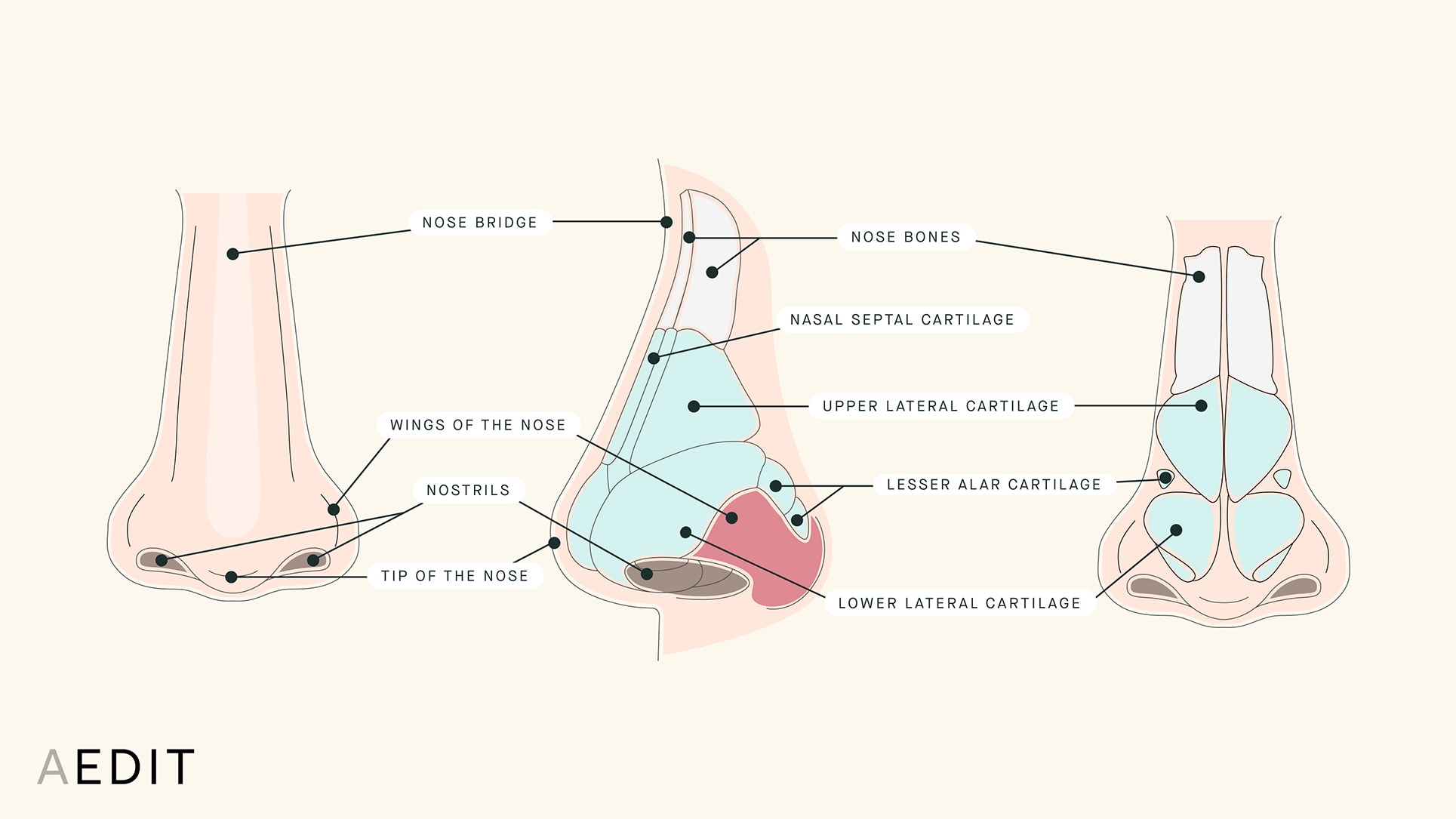
The Skinny
AEDIT
Before & After Images by Provider












Before & After Images by Provider
Nose Angle Solutions
The Specifics
Who might consider a procedure to correct an angled or crooked nose?
An angled or crooked nose can result from genetics, trauma, or aging. Medically speaking, a crooked nose is a nasal deformity characterized by deviations in the planes of the nose between the upper third (nasal bones) and the lower two thirds (cartilage aspect) down to the nasal tip. Deviations in nasal structures can be further classified into C, I, or S-shaped.
The Anatomy of the Nose

Nasal deviations can be both functional and aesthetic. Functional crooked noses may be correlated to abnormalities of the nasal passages, a deviated septum, and breathing problems. A facial plastic surgeon may recommend surgical techniques such as a septoplasty nose surgery or septorhinoplasty in certain severe, medically necessary cases (check out our guide to Breathing Concerns to learn more).
What can you expect from a procedure to correct an angled or crooked nose?
A cosmetic procedure to correct an angle or crooked nose can be as invasive as facial plastic surgery (think: a rhinoplasty or nose job) or as simple as at home makeup applications.
A rhinoplasty procedure will provide permanent and far reaching results, however, it will necessitate weeks to months of downtime. Liquid rhinoplasties can be effective at temporarily creating the illusion of a dorsal hump reduction (check out our guide to nose bump concerns). The right makeup and contour technique, meanwhile, can provide the most basic improvements on a daily basis.
When should you consider a procedure to correct an angled or crooked nose?
The best time to pursue a procedure to correct an angled or crooked nose is when you’re ready! In all seriousness, we all know makeup can be applied any time of day, and taken off just as easily (most of the time), but plastic surgery procedures should be evaluated for their invasiveness and needed recovery.
Most rhinoplasties require a few weeks to months of recovery, and the results evolve over 12 to 18 months. A liquid rhinoplasty with dermal fillers will produce more immediate results that are temporary (think: 6 to 12 months). A conversation with a board certified plastic surgeon can determine what treatment options are most appropriate, and also provide a more specific timeline for an individual candidate.
To better understand the healing and downtime associated with the procedure, check out our complete guide to rhinoplasty recovery.
Why should you consider a procedure to correct an angled or crooked nose?
It goes without saying that any plastic surgery is most always a matter of personal aesthetics. Considering a procedure to correct an angled or crooked nose makes sense if you have a misshapen or misaligned nose that you want to straighten. It also makes sense if you are looking to achieve better facial symmetry, are having trouble breathing because your air passages are wonky, or it’s just something you want to do.
Surgical Procedures to Correct Nose Angle
We all know about the so-called ‘nose job.’ Turns out, there are a number of different rhinoplasty techniques depending on the state of the nose and aesthetic goals of the patient.
Non-Surgical Procedures to Correct Nose Angle
Less invasive but also less permanent, dermal fillers and even makeup can be used to refine an angular or crooked nose.
Makeup
While not all of us are professional makeup artists, using makeup to contour and define the face can create contrasts to alter the nasal appearance. At home, over-the-counter beauty products can be highly effective, relatively inexpensive, and simple to apply. Plus, a plethora of YouTube tutorials can help develop and foster your burgeoning cosmetic skills. Here are a few tips:





